a good reference:
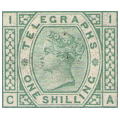
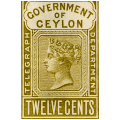
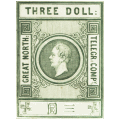

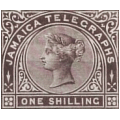
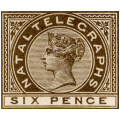
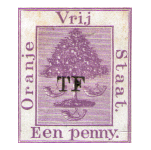
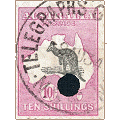
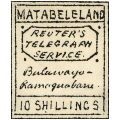
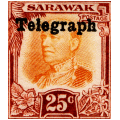
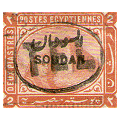
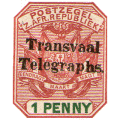
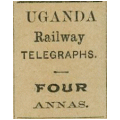
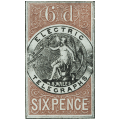
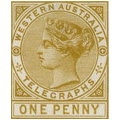
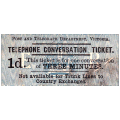
| Up a level | Not my site, but a good reference: |
||||||
 |
 |
 |
 |
 |
 |
 |
 |
| GB | Ceylon | Hong Kong | India | Jamaica | Natal | OFS | Australia and states |
| Up a level | by Dave Elsmore. | ||||||
 |
 |
 |
 |
 |
 |
 |
 |
| Other Africa | Sarawak | Sudan | Transvaal | Uganda | New South Wales | Western Australia | Other Australia |
Steve Hiscocks wrote:
The 'definitive' telegraph stamps of 1881 are quite straightforward although most values are by no means common. The final printing was
made in 1901 and there was expectation in Natal that these would be followed by a King Edward VII series. The King Edward VII series did not
materialize however and provisionals based on revenue stamps were prepared to fill the gap. These show many varieties and are of considerable
interest. The use of these provisionals was presumably followed by the use of postage stamps.
Cancellations are noted below. The circular date stamps used were mainly those used for postage stamps but special telegraphic cancellations were
used in Durban and Pietermaritzburg.
1881 - Watermark Crown over CA sideways, perf 14.
Typographed by De La Rue.
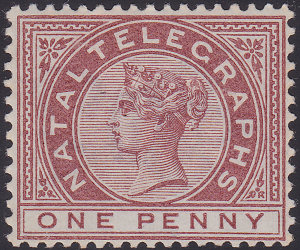 |
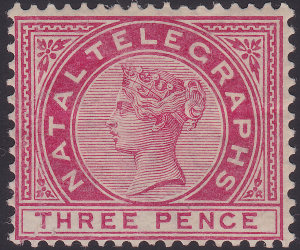 |
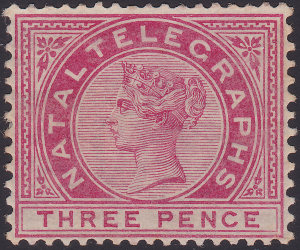 |
| 1d H1 | 3d H2 - two shades | |
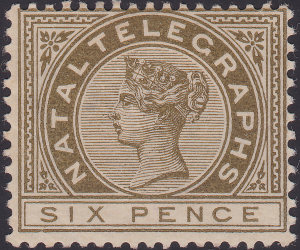 |
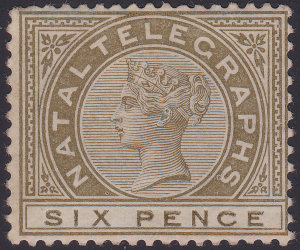 |
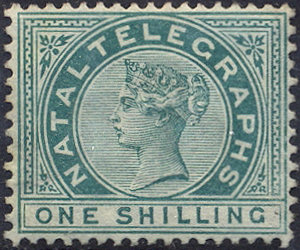 |
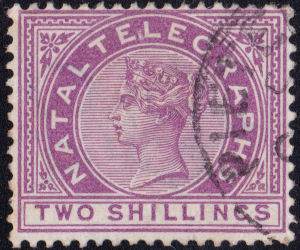 |
| 6d H3 - two shades | 1s H4 - from RL. | 2s H5 - Used. | |
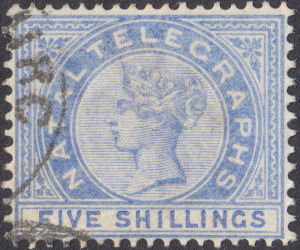 |
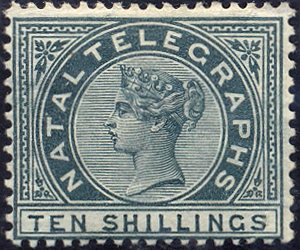 |
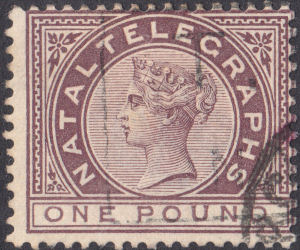 |
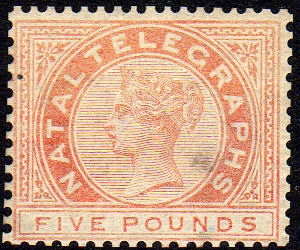 |
| 5s H6 - Used. | 10s H7 - from RL. | £1 H8 - Used. | £5 H9 courtesy of Andrew Higson. |
The printing seems to have been in two operations with the value added later.
The positioning of the value within the frame is variable.
The 6d in the illustration below suggests the colour may also not always match.
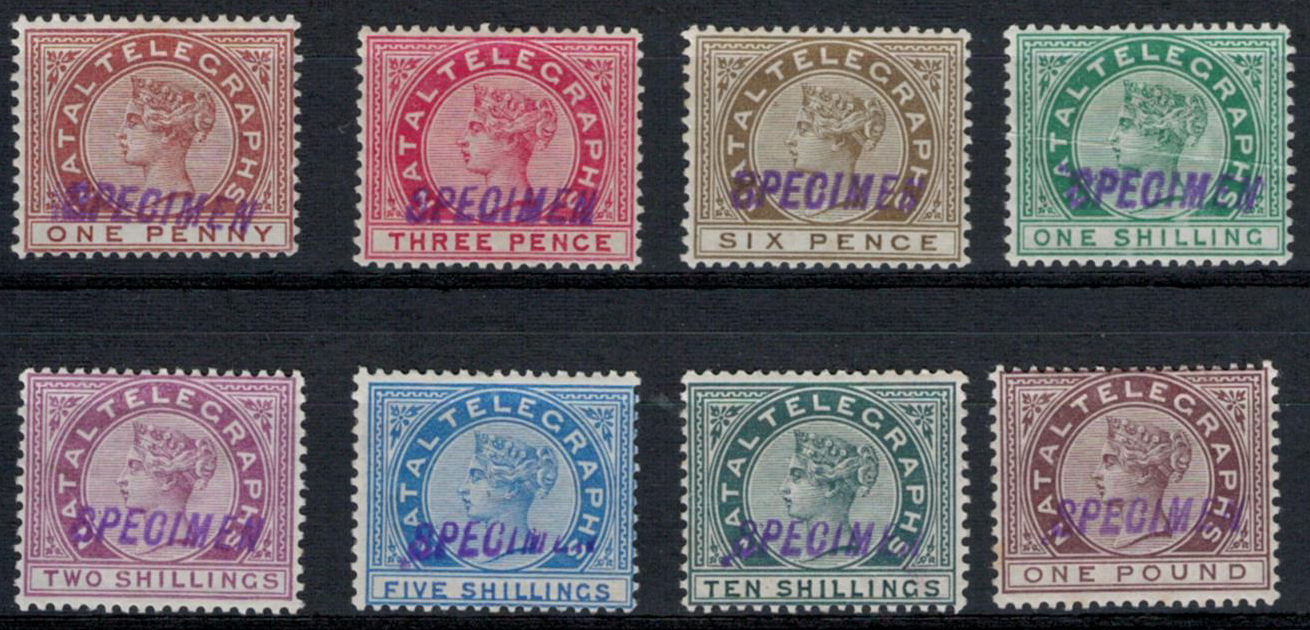 |
| All but the £5 as Specimens, courtesy of Roger de Lacy-Spencer. |
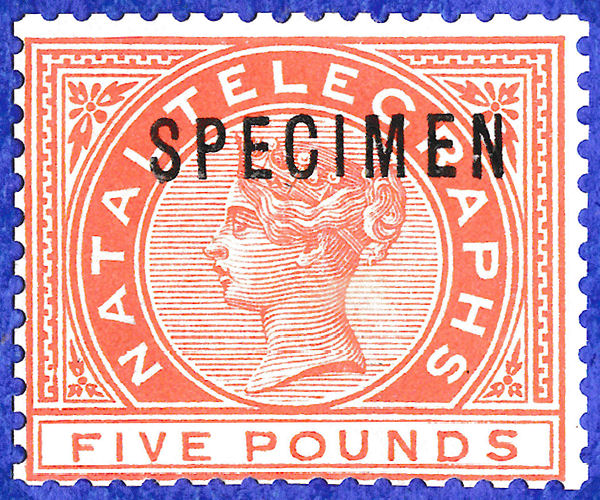
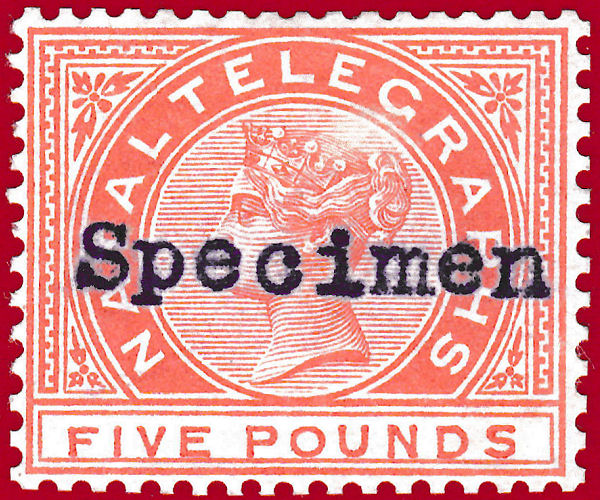
Note the differences in these. I am told the last is a unique unlisted type ex Marcus Samuel.
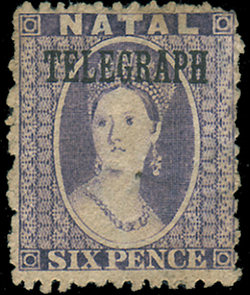 |
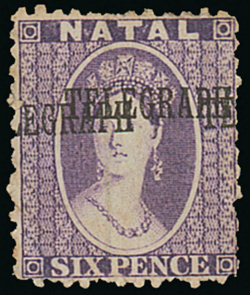 |
| 6d H10 Courtesy of Deverell & Macgregor. |
6d H10a - Ex. Andrew Higson. Image courtesy of Spink & Son. |
Hiscocks describes this as an 1888 provisional listed by Morley and Robson Lowe but unconfirmed.
The first example I have seen was sold by Andrew Higson at Spink in London. It has a double overprint.
There was also said to be an illustration in a 1942 article by A.E. Basden, “South African telegraph stamps” in
The South African Philatelist Vol.18, No.12, p.136. I have not seen it.
I have though now been shown the other example above, sold in 2007 (thanks Alan).
| RH # | Hisc. | Description | Mint | Used |
|---|---|---|---|---|
| RH10 | H10 | 6d dull mauve. | - | - |
| RH10a | - | overprint doubled. | 2500.00 | - |
It was anticipated that a King Edward version would replace The Queen Victoria series.
That did not happen however and provisionals were produced with various overprints on Revenue stamps of 1886-91.
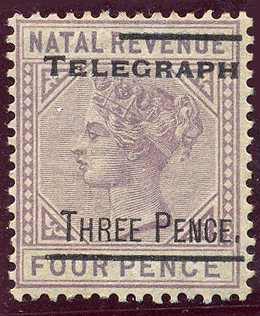 |
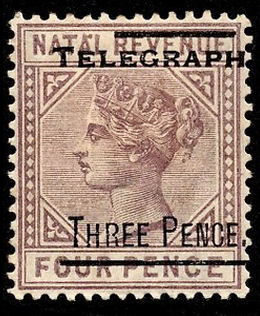 |
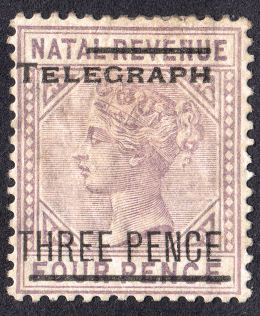 |
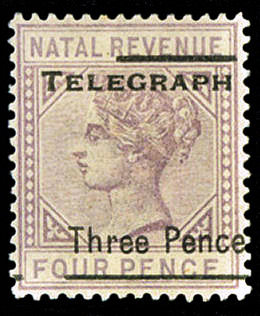 |
| 3d on 4d H11 (1.8mm) - from RL. | 3d on 4d H11a (1.2mm gap) | 3d on 4d H12 (same-height capitals) | 3d on 4d H13 (lower case) |
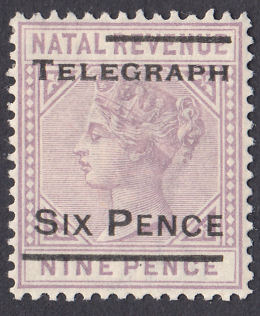 |
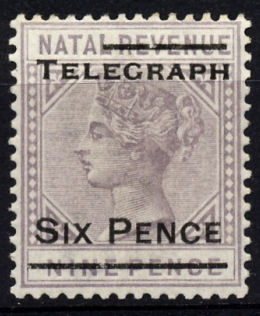 |
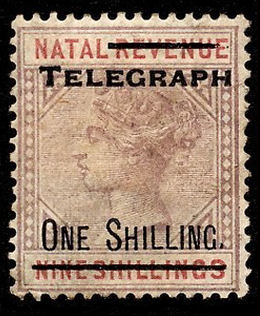 |
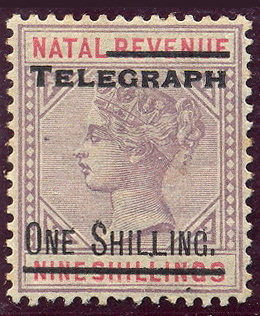 |
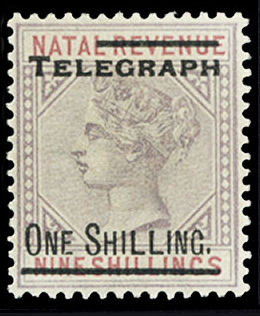 |
| 6d on 9d H14 (1.8mm gap) | 6d on 9d H14a (1.2mm gap) | 1s on 9s H15 (1.8mm gap, narrow 'LL') | 1s on 9s H15a (1.2mm) - from RL. | 1s on 9s H15b (1.2mm gap, wide 'LL') |
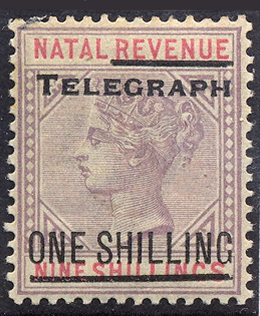 |
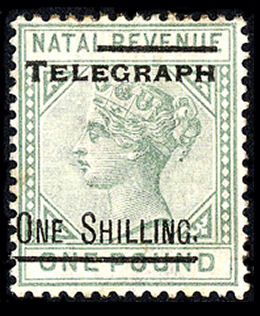 |
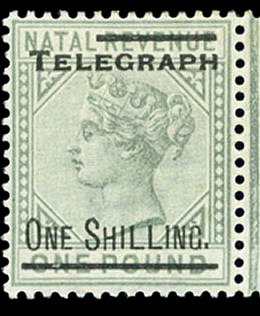 |
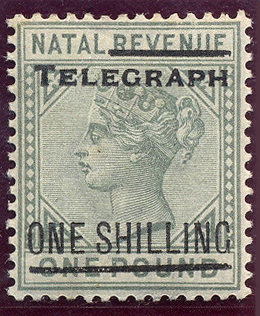 |
| 1s on 9s H16 - from RL. | 1s on £1 H17a (1.2mm, narrow 'LL') | 1s on £1 H17b (1.2mm, wide 'LL') | 1s on £1 H18 - from RL. |
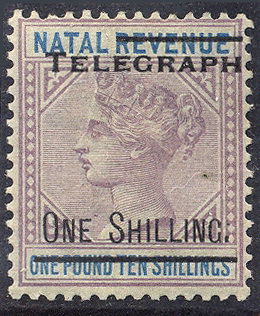 |
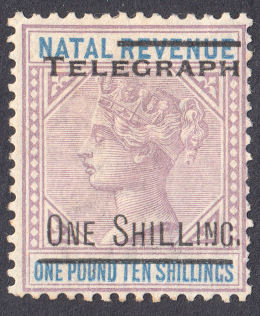 |
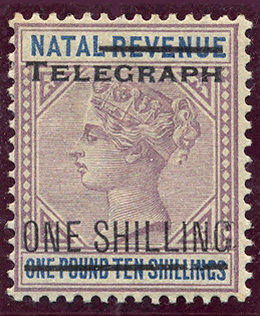 |
| 1s on £1.10s H19a - from RL. | 1s on £1.10s H19b (wide 'LL') | 1s on £1.10s H20 - from RL. |
| RH # | Hisc. | Description | Mint | Used |
|---|---|---|---|---|
| RH11 | H11 | 3d on 4d dull mauve (1.8mm gap between 'TELEGRAPH' and upper bar). | 30.00 | 35.00 |
| RH11a | H11a | 1.2mm gap. | 20.00 | 25.00 |
| RH11b | H11b | error — 'THREE PENCE' (small 'P') | 150.00 | 175.00 |
| RH12 | H12 | 3d on 4d dull mauve (1.2mm gap between 'TELEGRAPH' and upper bar). | 20.00 | 25.00 |
| RH13 | H13 | 3d on 4d dull mauve (lower case). | 30.00 | 35.00 |
| RH13a | H13a | error — antique 'e' in 'Three'. | 150.00 | 175.00 |
| RH14 | H14 | 6d on 9d dull mauve (1.8mm gap between 'TELEGRAPH' and upper bar). | 50.00 | 60.00 |
| RH14a | H14a | 1.2mm gap. | 25.00 | 30.00 |
| RH14b | H14b | error — printed on reverse (displaced upwards. Both types). | - | - |
| RH15 | H15 | 1s on 9s dull mauve and carmine (9.3mm 'SHILLING' and 1.8mm gap). | 50.00 | 60.00 |
| RH15a | H15a | 1.2mm gap. | 20.00 | 25.00 |
| RH15b | H15b | 9.7mm 'SHILLING' and 1.2mm gap | 50.00 | 60.00 |
| RH16 | H16 | 1s on 9s dull mauve and carmine (1.2mm gap). | 200.00 | 225.00 |
| RH17 | H17 | 1s on £1 dull blue-green (9.3mm 'SHILLING' and 1.8mm gap). | 50.00 | 60.00 |
| RH17a | H17a | 1.2mm gap. | 20.00 | 25.00 |
| RH17b | H17b | 9.7mm 'SHILLING' and 1.2mm gap | 50.00 | 60.00 |
| RH18 | H18 | 1s on £1 dull blue-green (1.2mm gap) - All equally large capitals like H20. | 200.00 | 225.00 |
| RH19 | H19 | 1s on £1.10s dull mauve and blue (9.3mm 'SHILLING' and 1.8mm gap). | 75.00 | 90.00 |
| RH19a | H19a | 1.2mm gap. | 30.00 | 35.00 |
| RH19b | H19b | 9.7mm 'SHILLING' and 1.2mm gap | 75.00 | 90.00 |
| RH20 | H20 | 1s on £1.10s dull mauve and blue (1.2mm gap, letters of 'SHILLING' same height). | 300.00 | 325.00 |
A British Post Office Circular(PDF) of 1 July 1878, states :
"Notice has been received that Telegraphic communication has been extended to Natal, and that Telegraph Offices have been opened at the following places :—
Pietermaritzburg, Durban, and The Point.
The rate to these places from Cape Town is 5s. for 20 words including the addresses, and 1s. for every additional 10 words."
A Telegraph Sending Form T/1 of 1896, used at the Point, Durban with 1/6d worth of stamps.
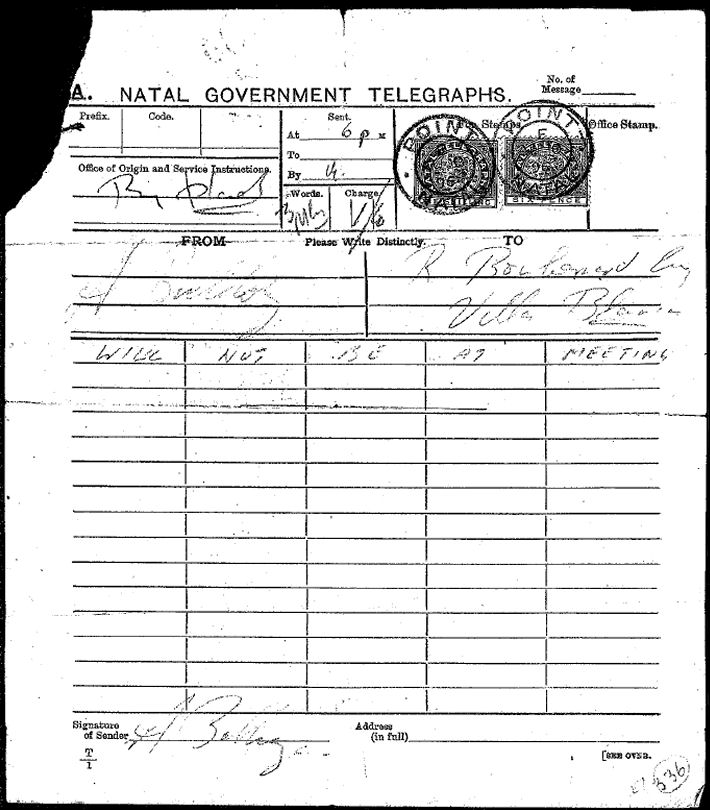
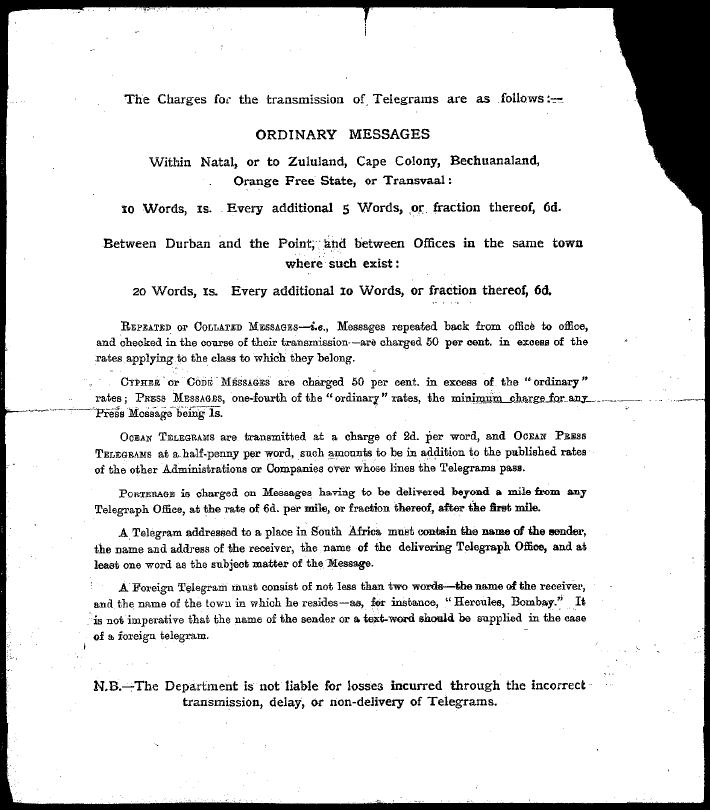
The back lists the charges, but it is unclear what / whether names and/or addresses are included.
Images courtesy of R. Timothy Bartshe.
A Telegraph Sending Form T.1 of the Anglo-Boer war period.
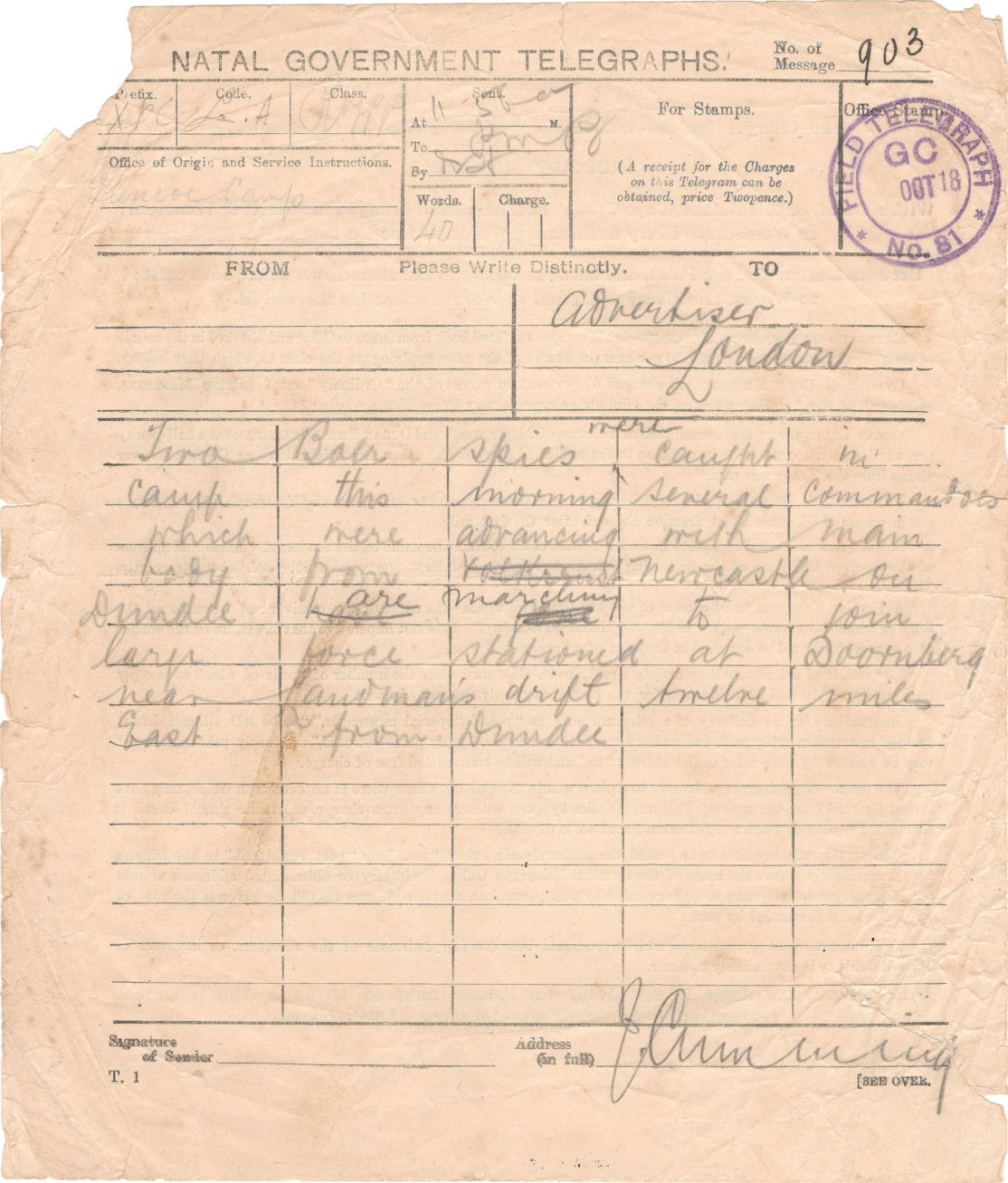
The Office Stamp is very similar to ones used in the earlier Bechuanaland Expedition 1884-85, except for the date.
At that time, the code GC meant Groot Choing, but I'm told that on this it refers to Glencoe Camp. The Boers occupied Glencoe on 25th October 1899.
This is presumably 18 October 1899. Image courtesy of Ian Paterson.
A Telegram of the Natal Government Telegraphs. Form T. 4. / CA
Sent from Pietermaritzburg (PMBurg) and received by the Natal Field Force 1 at Frere on 2 December 1899.
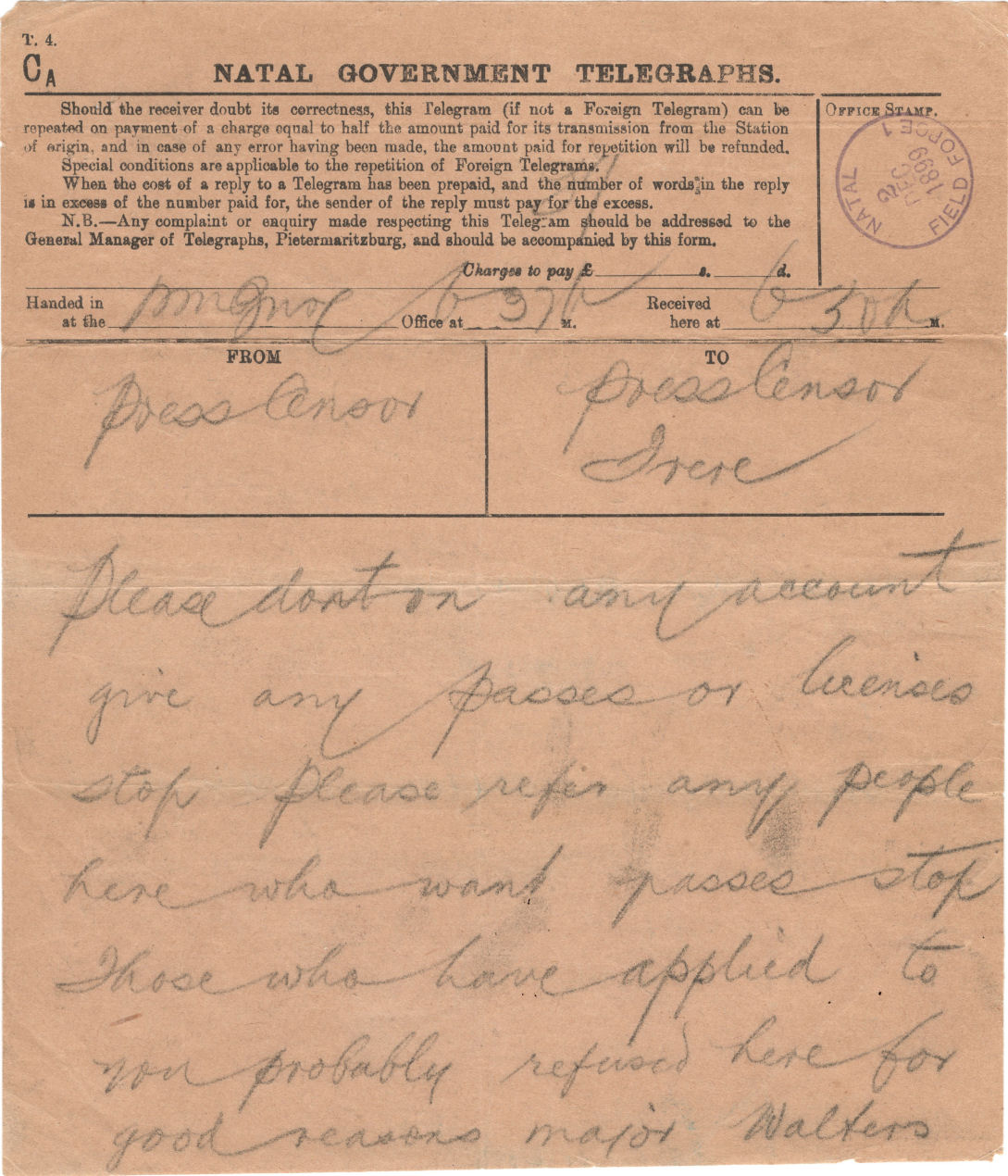
Censorship was clearly a serious concern. Lives were at stake. Image courtesy of Ian Paterson.
Last updated 16th May 2023
©Copyright Steve Panting 2012/13/14/15/16/17/18/19/20/21/22/23 except where stated.
Permission is hereby granted to copy material for which the copyright is owned by myself, on condition that any data is not altered and this website is given credit.